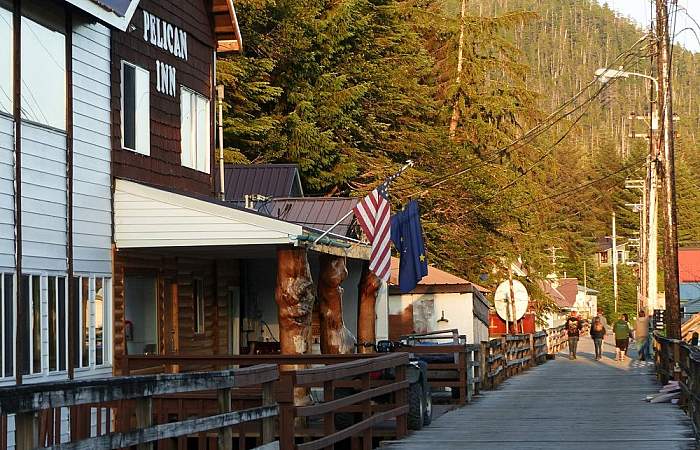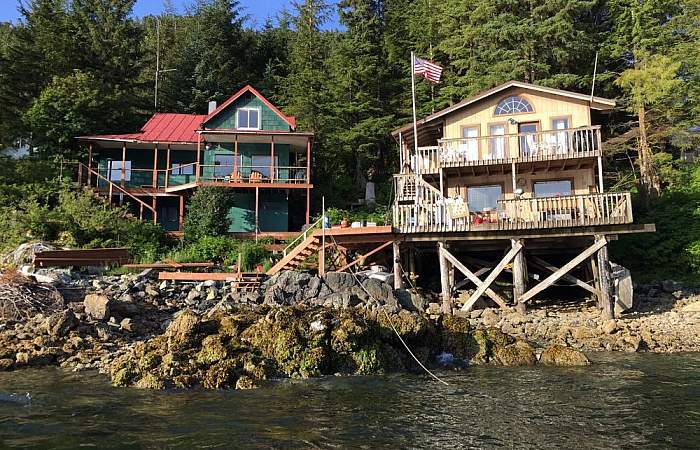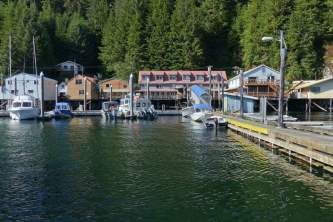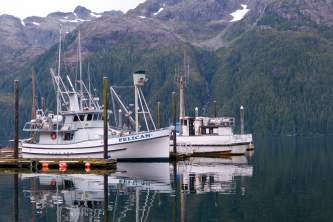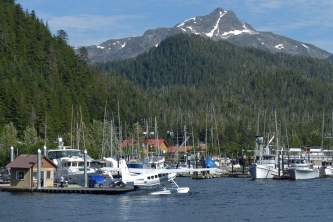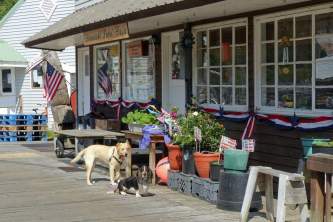Pelican
How Long to Spend
Mountains rise up about 3,000 feet on either side of Pelican, a small fishing village on Lisianski Inlet, on the edge of the Gulf of Alaska. The draw here? Dramatic scenery, incredible sport fishing and a quaint community seemingly unchanged since the 1940s.
Pelican was developed in the late 1930s as a site for cold storage so fishermen wouldn’t have to travel all the way to Sitka to get their haul processed and on ice. The protected location near the Gulf of Alaska put Pelican “closest to the fish,” a distinction the community maintains as part of its present-day character.
Around 75 people make their home here year-round, with 200 or more staying just the summer. A visit to Pelican is most satisfying if you spend at least two to four days. The town, and its boardwalk, are built on pilings above Lisianski Inlet, and you can spend a whole day exploring the community. Mingle with locals and visitors on Pelican’s 1-mile long boardwalk, Salmon Way (speed limit 12 mph!). Stroll to the general store, library (open three hours a day), or take in a meal or cup of coffee at one of two local restaurants. Pelican also boasts a city hall, health center, church, liquor store, and fire department, complete with a 1952-era fire truck that still runs.
Summer is the best time to visit, when the dock is busy with planes landing and boats coming in and out, lending to the commercial fishing town atmosphere. A charter is the best way to partake in sportfishing yourself, with local guides showing you to the large halibut, salmon, and crazy-looking lingcod that make for awesome photo ops.
This is also a great time of year to take in wildlife, and if you are a photographer, you might just wear out your camera. Charter a boat and captain for the most flexibility and best chance of seeing what’s on your wish list. Plan for a 2-3 day charter to ensure that you get the most out of your investment. You can watch brown bear feasting on salmon, spot Sitka black-tail deer, whales, orca, sea lions, porpoise and rafts of sea otters – all within a couple of days.
Pelican is also where you can begin explorations of nearby hot spots (quite literally). White Sulphur Hot Springs is a short boat ride south, and is a favorite of kayakers who come back year after year. Yakobi Island’s Bohemia Basin, just 15 water miles north, offers a shelter, and a 4-mile trek through old-growth forest, past lakes, and an historic mining area.
Accommodations in Pelican vary widely. You can go all-inclusive and stay at a lodge, rent a room in the city-owned bunkhouse, reserve an apartment right along the boardwalk, or plan to kayak and camp on beaches or in four Forest Service cabins maintained in the West Chichagof-Yakobi Wilderness.
Whatever you choose, Pelican’s locals encourage you visit this place, where a bit of a time warp has preserved a frontier way of life and a virtually untouched wilderness is ready to be explored.
Getting There
You can reach Pelican on a quick one-hour flight from Juneau. Alaska Seaplanes offers three flights daily in the summer and 1-2 flights daily in winter. Pelican is also on the Alaska Marine Highway System, with the ferry stopping here once a month year round. Hint: Many travelers opt to fly in and ferry out. The ferry stops in Gustavus on the way back to Juneau, giving you a taste of another small community that is surrounded by Glacier Bay National Park and Preserve. Read more about traveling to Pelican.

